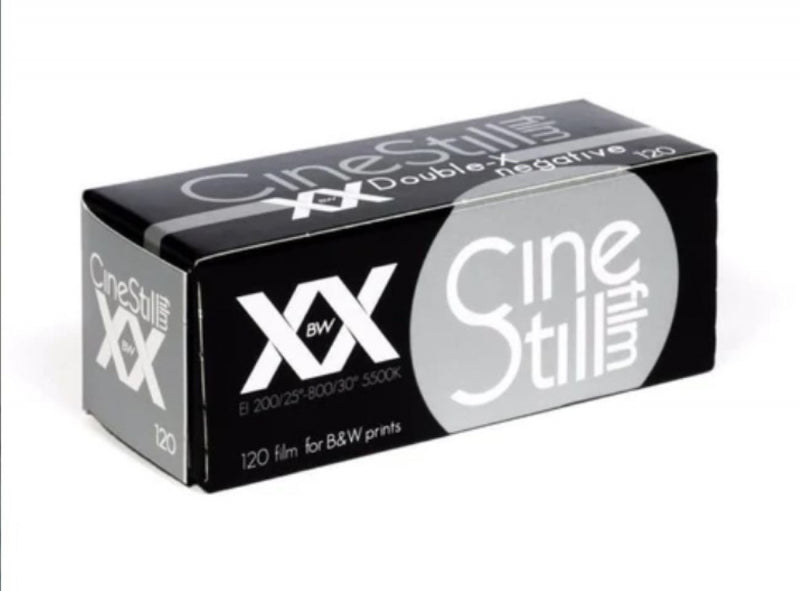CineStill BwXX 120 is a classic panchromatic black and white negative film for both outdoor and indoor/studio use. Akin to the legendary Kodak Plus-X & Tri-X emulsions, it is an excellent choice for all those looking for a classic film stock with top-level performance and versatility in a variety of conditions.
It has a variable base sensitivity of 250 under daylight (5500K) and 200 under tungsten (3200K) lighting conditions, and can be rated up to ISO 1600 with the appropriate processing compensation. Ideal for low light situations, this film delivers rich blacks and and wide range of tonal steps, while also providing very high sharpness, crisp micro-contrast, and a fine grain structure. This film stock is left relatively unchanged since its release in 1959 for still and motion picture use.
Some of the iconic movies filmed on the classic Eastman Double-X film stock 5222 include:
The Lighthouse (2019), Raging Bull (1980), Schindler's List (1993), Stranger Than Paradise (1984), Memento (2000), Kafka (1991), Casino Royale (2006), I'm Not There (2007), Kill Bill: Vol. 1 (2003), Manhattan (1979), Cinderella Man (2005), Aferim! (2015), Frantz (2016), American Horror Story (2011-2017) and many many more.
"It is thanks to all the dedicated film shooters out there that we were able to bring such an exciting new film stock to the market. For all the silver halides enthusiasts out there, we hope you'll enjoy shooting this film as much as we do!"
Features
- Black and white negative film
- Variable speed (ISO 200-800) 120 format
- Classic cinematic look
- Rich tonality
- Excellent sharpness
CineStill D96 developer or Df96 Monobath, but is compatible with D-76, HC110 and all other black and white film developers. For all developing times, see the CineStill BwXX Development Times Chart.
Storage and handling
Load and unload film in subdued light. Store unexposed film in a refrigerator at 13°C (55°F) or lower in the original sealed package. To avoid moisture condensation on film that has been refrigerated, allow the film to warm up to room temperature before opening the package. Process film as soon as possible after exposure. Protect processed film from strong light, and store it in a cool, dry place.
